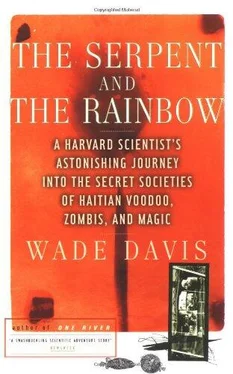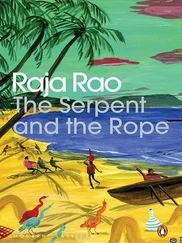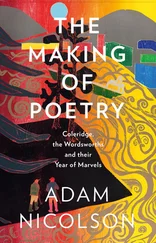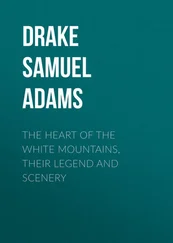Wade Davis - The Serpent and the Rainbow
Здесь есть возможность читать онлайн «Wade Davis - The Serpent and the Rainbow» весь текст электронной книги совершенно бесплатно (целиком полную версию без сокращений). В некоторых случаях можно слушать аудио, скачать через торрент в формате fb2 и присутствует краткое содержание. Год выпуска: 1985, Издательство: Simon & Schuster, Жанр: Старинная литература, на английском языке. Описание произведения, (предисловие) а так же отзывы посетителей доступны на портале библиотеки ЛибКат.
- Название:The Serpent and the Rainbow
- Автор:
- Издательство:Simon & Schuster
- Жанр:
- Год:1985
- ISBN:нет данных
- Рейтинг книги:5 / 5. Голосов: 1
-
Избранное:Добавить в избранное
- Отзывы:
-
Ваша оценка:
- 100
- 1
- 2
- 3
- 4
- 5
The Serpent and the Rainbow: краткое содержание, описание и аннотация
Предлагаем к чтению аннотацию, описание, краткое содержание или предисловие (зависит от того, что написал сам автор книги «The Serpent and the Rainbow»). Если вы не нашли необходимую информацию о книге — напишите в комментариях, мы постараемся отыскать её.
The Serpent and the Rainbow — читать онлайн бесплатно полную книгу (весь текст) целиком
Ниже представлен текст книги, разбитый по страницам. Система сохранения места последней прочитанной страницы, позволяет с удобством читать онлайн бесплатно книгу «The Serpent and the Rainbow», без необходимости каждый раз заново искать на чём Вы остановились. Поставьте закладку, и сможете в любой момент перейти на страницу, на которой закончили чтение.
Интервал:
Закладка:
What did remain were the secret societies, but to pursue that connection demanded a new orientation. It would not be enough to document a set of principles as perceived by the Bizango leadership; I would have to observe how they were played out in the day-to-day lives of the people. To do that I would have to enter a community and undertake a study that would require months, not weeks. It was another level of commitment that might well involve completing my initiation into the Bizango society—not as an end in itself but only as a means. It was not something to be undertaken lightly. Regretfully, I decided to curtail my work with Andrés.
It was, in any case, a time for change. Rachel had reports to prepare before she returned to her university and had to stay in the capital. I had a book to write. But it was summer again, the season of the pilgrimages, and just before returning to the States I was drawn north to the festival at Plaine du Nord, where those who serve the loa pay homage to Ogoun, the god of fire and war.
A sacred mapou tree marks the place where once each year a mud pond spreads over a dry roadbed near the center of the village. Like the waters of Saut d’Eau, the mud of the basin is said to be profoundly curative, and each year thousands of pilgrims arrive, some to fill their bottles, some to cleanse their babies, many to bathe. Unlike Saut d’Eau, the area around the basin is constricted by houses that funnel all the energy of the pilgrims into a small, intensely charged space. And in place of the serenity of Damballah, there is the raging energy of Ogoun.
Around the periphery of the basin a ring of candles burns for the spirit, and the pilgrims dressed in bright cotton lean precariously over the mud to leave offerings of rum and meat, rice and wine. There is a battery of drums to one side, and those mounted by the spirit enter the basin, disappear, and emerge transformed. One sees a young man, his body submerged with only his eyes showing, move steadily like a reptile past the legs of naked women, their skin coated with slimy clay. Beside them, children dive like ducks for tossed coins. At the base of the mapou, Ogoun feeds leaves and rum to a sacrificial bull; others reach out to touch it, and then the machete cuts into its throat, and the blood spreads over the surface of the mud.
I was watching all this when I felt something fluid—not water or sweat or rum—trickle down my arm. I turned to a man pressed close beside me and saw his arm, riddled with needles and small blades, and the blood running copiously over the scars of past years, staining some leaves bound to his elbow before dripping from his skin to mine. The man was smiling. He too was possessed, like the youth straddling the dying bull, or the dancers and the women wallowing in the mud.
Glossary
ADORATION The song that accompanies the offering of money at ceremonies.
AGWÉ Vodoun loa; the spirit of the sea.
APHONIA Loss of voice due to functional or organic disorder.
ASSON The sacred rattle of the houngan or mambo; a calabash filled with seeds or snake vertebrae and covered by a loose web of beads and snake vertebrae.
AUTONOMIC NERVOUS SYSTEM That part of the nervous system regulating involuntary action, as of the heart and digestive system.
AYIDA WEDO Vodoun loa whose image is the rainbow; mate of Dam-ballah.
AYIZAN Vodoun loa, patroness of the marketplace and mate of Loco.
BAGI Inner sanctuary of the temple, the room containing the altar for the spirits.
BAKA An evil spirit, a supernatural agent of the sorcerers that often takes the form of an animal.
BARON SAMEDI Vodoun loa, the lord and guardian of the cemetery, represented there by a large cross placed over the grave of the first man to be buried there. Important spirit of the Bizango.
BÊTE SEREINE Animal of the Night, an appellation for the members of the Bizango societies. Literally, “serene beast.”
BIZANGO The name of the secret society; also connotes the rite practiced by the Shanpwel. The name is possibly derived from the Bissagos, an African tribe that occupied an archipelego of the same name off the coast of Kakonda, between Sierra Leone and Cape Verde.
BLANC “White,” but more precisely “foreigner,” and like the term gringo in parts of Latin America, not necessarily pejorative.
BOKOR Although the word is derived from the Fon word bokono , or priest, in Haiti the bokor has come to represent the one who practices sorcery and black magic as a profession.
BOUGA The toad Bufo marinus .
BOURREAU The executioner, a rank in the Bizango societies said to be responsible for enforcing the decisions of the groupe d’état-majeur.
CACIQUE Term is still used in Haiti to refer to the pre-Columbian Amerindian rulers and divisions of the country.
CALABASH A gourd used as a water container or ceremonial vessel.
CAMIONNETTE A small truck used as a bus.
CANARI A clay jar that is used for sheltering the ti bon ange, and which is broken at funeral rites.
CANNIBAL A term for a secret society.
CANZO The ordeal by fire through which the adept passes into initiation.
CARREFOUR The crossroads; also a vodoun loa and one associated with the Bizango, as well as the Petro rites.
CATA The smallest of the set of three Rada drums.
CHASSEUR The hunter, a rank of the Bizango society.
CHEF DE SECTION The appointed authority responsible for policing the section rurale .
CHEVAL The horse; in vodoun parlance the individual who is mounted by the spirit. Hence the metaphor for possession and the meaning of the title of Maya Deren’s book The Divine Horsemen .
CHRISTOPHE, HENRI The former slave, lieutenant of Dessalines, who ruled the northern half of Haiti from 1807 to 1820, when he took his own life.
CLAIRIN Inexpensive clear white rum used commonly in vodoun ritual.
COMBITE Collective labor party, generally for agricultural work.
CONCOMBRE ZOMBI The vernacular name for Datura stramonium .
CONVOI The name of a particular secret society.
CORPS CADAVRE The body, the flesh, and the blood as opposed to the various components of the vodoun soul.
COUP L’AIRE An air spell, a means of passing a magical spell that will cause misfortune and illness.
COUP N’ÂME A soul spell, a means of magically capturing the ti bon ange of an individual.
COUP POUDRE A powder spell, a magical powder that may cause illness and/or death.
CREOLE The language of the traditional vodoun society, also used to designate anything native to Haiti.
CYANOSIS A bluish coloration to the skin caused by lack of oxygen in the blood.
DAMBALLAH WEDO Vodoun loa whose image is the serpent, the mate of Ayida Wedo.
DATURA A genus of plants in the potato family (Solanaceae).
DESSALINES, JEAN-JACQUES Leading general of Toussaint L’Ouverture and first president of independent Haiti from 1804 until his assassination in 1806.
DESSOUNIN The ritual separating a dead person’s ti bon ange and spirit, or loa, from the body.
DJAB The devil, a baka, a malevolent force.
DOKTE FEUILLES The leaf doctor, herbalist healer.
DYSPHAGIA Difficulty in swallowing.
EMPEREUR A founding president of a Bizango society; also the titular leader of a number of different societies.
ERZULIE A vodoun loa, the spirit of love.
ESPRIT The spirits or soul of the dead.
FUGU A genus of marine fish and the vernacular name for the tetrodo-toxin-containing fish that are served in Japanese restaurants.
FWET KASH A sisal whip.
GAD A protective charm, a tattoo that is physically applied to the skin at initiation to protect the individual from evil.
GOURDE Unit of Haitian money worth twenty cents.
Читать дальшеИнтервал:
Закладка:
Похожие книги на «The Serpent and the Rainbow»
Представляем Вашему вниманию похожие книги на «The Serpent and the Rainbow» списком для выбора. Мы отобрали схожую по названию и смыслу литературу в надежде предоставить читателям больше вариантов отыскать новые, интересные, ещё непрочитанные произведения.
Обсуждение, отзывы о книге «The Serpent and the Rainbow» и просто собственные мнения читателей. Оставьте ваши комментарии, напишите, что Вы думаете о произведении, его смысле или главных героях. Укажите что конкретно понравилось, а что нет, и почему Вы так считаете.












